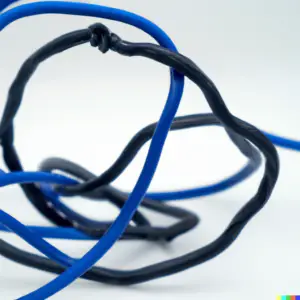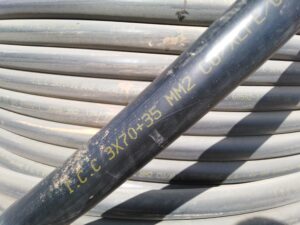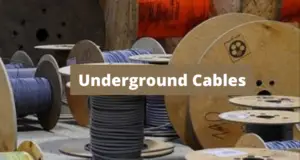Cable twists and knots are common occurrences in electrical installations and can have a significant impact on electrical performance.
Whether you are dealing with power cables, communication cables, or any other type of electrical cable, twists and knots can result in signal distortion, reduced power transmission, and even equipment damage.
In this article, we will explore the impact of cable twists and knots on electrical performance in detail.
We will discuss what cable twists and knots are, how they occur, and their effect on electrical cables. We will also provide tips on how to prevent cable twists and knots from occurring in the first place.
Table of Contents
What are Cable Twists and Knots?

Cable twists and knots are deformations that occur in electrical cables, forming bends, twists, or loops.
These deformations are often caused by improper handling, installation, or storage of the cable. They can also occur naturally over time due to cable movement, thermal expansion and contraction, and other environmental factors.
Cable twists are formed when the cable is bent or twisted beyond its natural curvature, resulting in permanent deformation. Knots, on the other hand, are formed when the cable is tied or coiled, resulting in a temporary or permanent deformation depending on the severity of the knot.
Impact on Electrical Performance
Cable twists and knots can have a significant impact on the electrical performance of a cable. These deformations can result in signal distortion, reduced power transmission, and even equipment damage.
Here are some of the ways that cable twists and knots can impact electrical performance:
- Signal Distortion: Cable twists and knots can cause signal distortion in communication cables, resulting in poor signal quality, reduced bandwidth, and even signal loss. This can lead to communication errors, dropped calls, slow internet speeds, and other issues.
- Reduced Power Transmission: Cable twists and knots can also result in reduced power transmission in power cables. This can lead to voltage drops, power loss, and reduced efficiency, which can impact the performance of electrical equipment.
- Equipment Damage: Cable twists and knots can also cause physical damage to the cable, resulting in insulation damage, conductor damage, and even cable failure. This can lead to equipment damage, downtime, and costly repairs.
Preventing Cable Twists and Knots
Preventing cable twists and knots is essential to ensure the proper functioning of electrical cables. Here are some tips on how to prevent cable twists and knots from occurring:
- Proper Handling: Handle cables carefully, avoiding excessive bending, twisting, or coiling. Use cable ties or velcro straps to organize cables during installation and storage.
- Correct Installation: Follow the manufacturer’s instructions for cable installation, including minimum bend radius, maximum pulling tension, and proper cable support.
- Adequate Storage: Store cables properly, avoiding excessive bending, twisting, or coiling. Use cable reels or other storage solutions to prevent cable deformation.
- Regular Inspection: Regularly inspect cables for signs of deformation, including twists, knots, or other irregularities. Replace damaged cables immediately to avoid equipment damage and downtime.
- Proper Training: Ensure that all personnel handling cables are adequately trained in cable handling and installation procedures. This will help prevent cable twists and knots from occurring due to improper handling.
Conclusion
Cable twists and knots can have a significant impact on electrical performance, resulting in signal distortion, reduced power transmission, and equipment damage.
Preventing cable twists and knots is essential to ensure the proper functioning of electrical cables.
By following proper cable handling, installation, storage, and inspection procedures, you can prevent cable twists and knots and ensure the optimal performance of your electrical equipment.
Don’t Leave Empty-Handed!
Install my Free Android App on Google Play:
Electrical Cables Most Common Tables “Cables Tables”
And, my Electrical Calculations App “Fast Electrical Calculator”
Discover more great content by subscribing to My channel
Looking to stay ahead of the game in the world of electrical engineering? Subscribe to my YouTube channel and gain access to exclusive content you won’t find anywhere else!
The staff I recommend
(Amazon Affiliate Links to products I believe are high quality):
- Economy 120 Volt/60Hz AC Power Source – Step-Down Voltage & Frequency Converters 1800W
- UNI-T Digital Multimeter Tester UT139C
- 50-Amp Extension Cord for RV “100ft”
- Voltage Stabilizer 110/220v
- Hair Dryer “best selling“
- TOSHIBA EM131A5C-BS Countertop Microwave Ovens
Disclaimer: This contains affiliate links to Amazon products. I may earn a commission for purchases made through these links.



